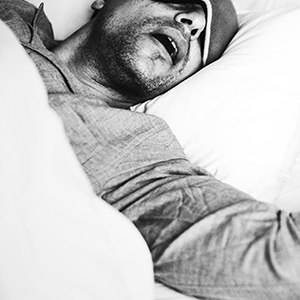Diagnostic accuracy and feasibility of portable sleep monitoring in patients with obstructive sleep apnea: Re-exploring the utility in the current COVID-19 pandemic

Submitted: February 24, 2021
Accepted: August 3, 2021
Published: September 14, 2021
Accepted: August 3, 2021
Abstract Views: 1551
PDF: 697
Publisher's note
All claims expressed in this article are solely those of the authors and do not necessarily represent those of their affiliated organizations, or those of the publisher, the editors and the reviewers. Any product that may be evaluated in this article or claim that may be made by its manufacturer is not guaranteed or endorsed by the publisher.
All claims expressed in this article are solely those of the authors and do not necessarily represent those of their affiliated organizations, or those of the publisher, the editors and the reviewers. Any product that may be evaluated in this article or claim that may be made by its manufacturer is not guaranteed or endorsed by the publisher.
Similar Articles
- Genki Inui, Katsuyuki Tomita, Masaharu Fukuki, Hirokazu Touge, Tomoyuki Ikeuchi, Ichiro Hisatome, Akira Yamasaki, Clinical characteristics for distinguishing between acute cardiogenic pulmonary edema and community-acquired pneumonia in elderly patients: a prospective observational study , Monaldi Archives for Chest Disease: Vol. 94 No. 2 (2024)
- Martina Turrin, Francesca Maria Pontoriero, Giulia Grisostomi, Giordano Fiorentù, Francesca Zampieri, Francesca Savoia, Cosimo Catino, Giuseppe Zanardi, Piera Peditto, Nicola Malacchini, Fabiola Zeraj, Matteo Bonato, Diana Sacchi, Maria Guido, Giovanni Morana, Micaela Romagnoli, Tracheal atypical solitary carcinoid in a so-called “difficult asthma”: a diagnostic challenge , Monaldi Archives for Chest Disease: Vol. 94 No. 2 (2024)
- Michele Vitacca, Piero Ceriana, Bruno Balbi , Claudio Bruschi, Maria Aliani, Mauro Maniscalco, Francesco Fanfulla, Aldo Diasparra, Luigino Rizzello, Daniela Sereni, Antonio Spanevello, The respiratory rehabilitation Maugeri network service reconfiguration after 1 year of COVID-19 , Monaldi Archives for Chest Disease: Vol. 91 No. 4 (2021)
- Matteo Vitacca, Anna Giardini, Lidia Gazzi, Michele Vitacca, Hidden biases in clinical decision-making: potential solutions, challenges, and perspectives , Monaldi Archives for Chest Disease: Vol. 93 No. 2 (2023)
- Raj Kumar, Parul Mrigpuri, Rohit Sarin, Jitendra Kumar Saini, Rashmi Yadav, Aditya Nagori, Sushil Kumar Kabra, Arpana Mukherjee, Geetika Yadav, Air pollution and its effects on emergency room visits in tertiary respiratory care centers in Delhi, India , Monaldi Archives for Chest Disease: Vol. 94 No. 1 (2024)
- Mariana Gomes Tinoco, Margarida Castro, Luísa Pinheiro, Tamara Pereira, Margarida Oliveira, Sílvia Ribeiro, Nuno Ferreira, Olga Azevedo, António Lourenço, “Hot phase” clinical presentation of biventricular arrhythmogenic cardiomyopathy: when the perfect electrical storm spontaneously stops , Monaldi Archives for Chest Disease: Early Access
- Marco Umberto Scaramozzino, Maurizia Festa, Guido Levi, Ubaldo Romeo Plastina, Giovanni Sapone, Correlation between gastroesophageal reflux disease lung volumes and exacerbation of bronchial asthma: Italian pilot observational retrospective study GERDAS , Monaldi Archives for Chest Disease: Vol. 94 No. 2 (2024)
- Michele Vitacca, Cinzia Lastoria, Monica Delmastro, Domenico Fiorenza, Pasquale De Cata, Barbara Fusar Poli, Sonia Gilè, Paola Prometti, Mara Paneroni, Cristina Bianchi, Elena Mandora, Roberta Porri, Claudio Fracchia, Use of inhaled devices during a hospital exacerbation of COPD: a summary of an interdisciplinary audit held at ICS Maugeri Pavia, Italy (March-June 2019) , Monaldi Archives for Chest Disease: Vol. 90 No. 1 (2020)
- Thomas Galasso, Lorenzo Corbetta, Laura Mancino, Lucio Michieletto, Loris Ceron, Statistical approach to mediastinal staging in NSCLC with M.E.S.S.i.a. software , Monaldi Archives for Chest Disease: Vol. 89 No. 3 (2019)
- O. Toungoussova, M.P. Foschino Barbaro, L.M. Esposito, G.E. Carpagnano, F.G. Salerno, R.W. Dal Negro, A. Spanevello, Brittle asthma , Monaldi Archives for Chest Disease: Vol. 67 No. 2 (2007): Pulmonary series
<< < 15 16 17 18 19 20 21 22 23 24 > >>
You may also start an advanced similarity search for this article.

 https://doi.org/10.4081/monaldi.2021.1818
https://doi.org/10.4081/monaldi.2021.1818





